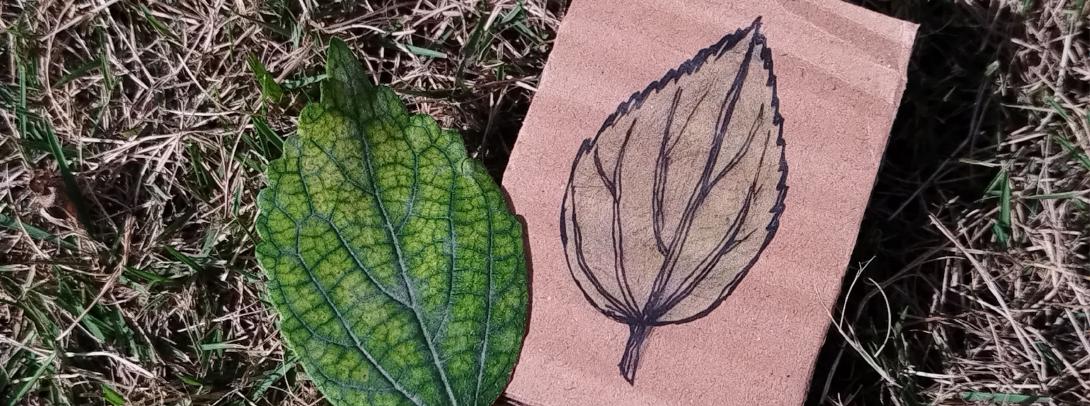Even in the midst of Shanghai’s concrete sprawl, pockets of nature can be found all over, and NYU Shanghai is no exception. Plant life can be found all over the campus, from trees to shrubs and grasses, not just on the first level but also the outdoor walking areas and all the way up to the rooftop garden spaces. On November 3, Fudan University graduate student and nature enthusiast Zhou Xinzhi led students, faculty, and staff on a tour of the ecological features of the New Bund campus. “I hope that through observing and experiencing nature, everyone will become interested in plants, insects, and birds that are common on campus,” Zhou said, adding that noticing our natural environment can help us think more deeply about how to improve it.
Staff member Qianni Zhu, who works in Student Affairs, said they enjoyed learning how to identify different plant species on the nature walk. “We can get very oblivious when we're a little too obsessed with getting from point A to point B and checking things off our to-do list,” they said.
So stop and look around you- you can follow this guide to take your own nature walk on campus. Take a moment, use your senses, and learn about the various species living and growing right alongside us.
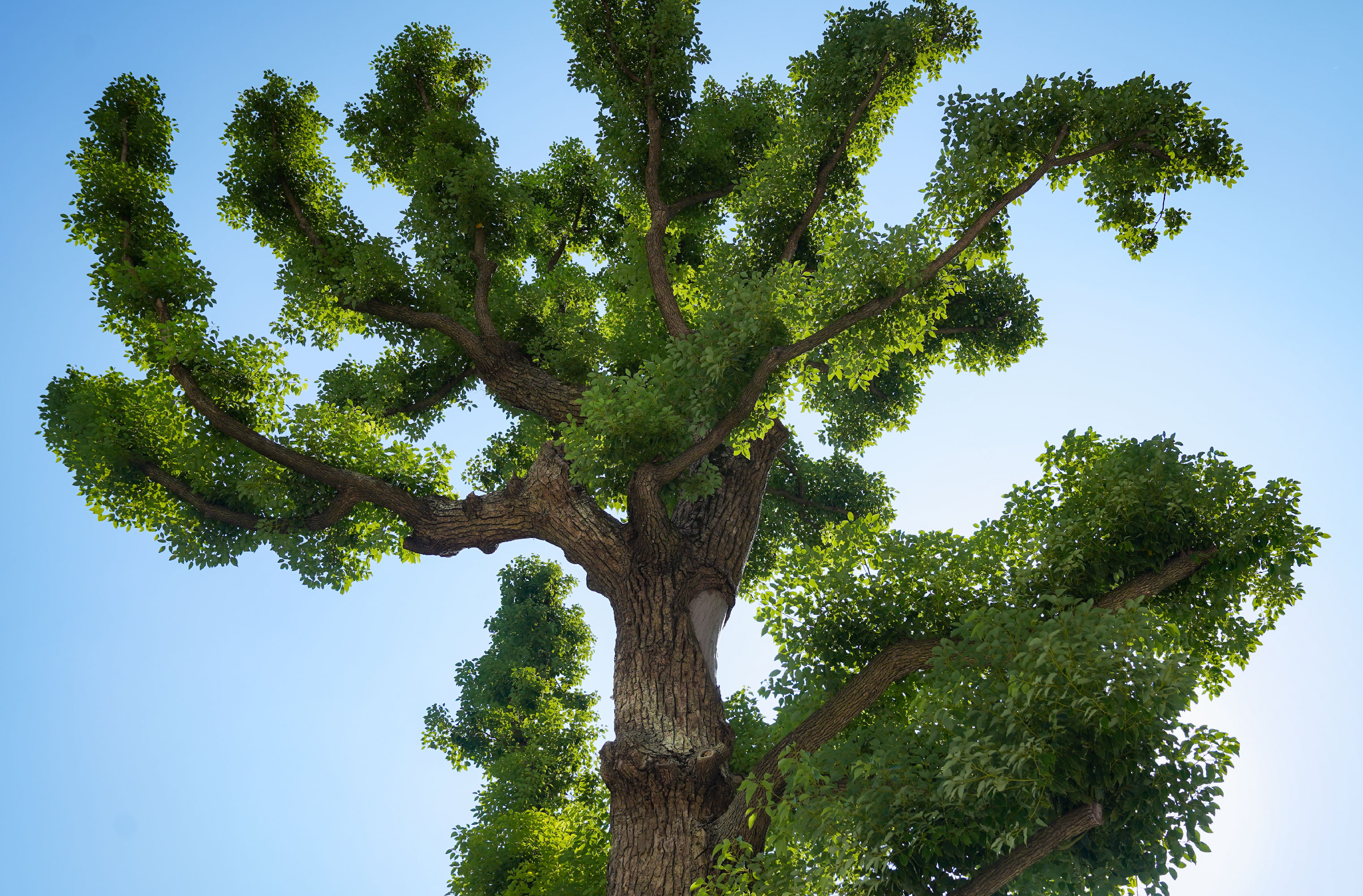
100 Years Young: Old Camphor Tree
Upon entering the quad, an ancient camphor tree stands tall to greet you. The roughly 100-year-old tree was saved from flooding in Fuzhou, Jiangxi Province more than two decades ago. When the New Bund campus was being designed, the beautiful tree was selected to be positioned in a central location on the campus. Native to China, the majestic camphor provides sustenance for many smaller friends–birds enjoy its fruits, and the eye-catching blue bottle butterfly eats its leaves in its larval stage. An evergreen tree, its fragrant foliage provides shade and greenery year-round. Next time you’re sitting under the tree, examine its leaves- you’ll find two glands at the base of the stem. If you pinch them, you can enjoy the tree’s refreshing herbaceous fragrance. For some, the presence of such an old tree on a university campus brings to mind the Chinese saying 十年树木百年树人, which can be translated as “it takes ten years to grow a tree, and a hundred years to educate a person.”
Alex Zou ’24, who joined the nature walk activity, says he especially enjoys hanging out near the tree on the quad. The natural features of the New Bund campus, he says, are “super important” to him, because “it relaxes me from the hard academic life.” Having spent most of his time at NYU Shanghai at the Century Avenue campus, Zou says the natural features make NYU Shanghai feel more like a campus than just a working building.
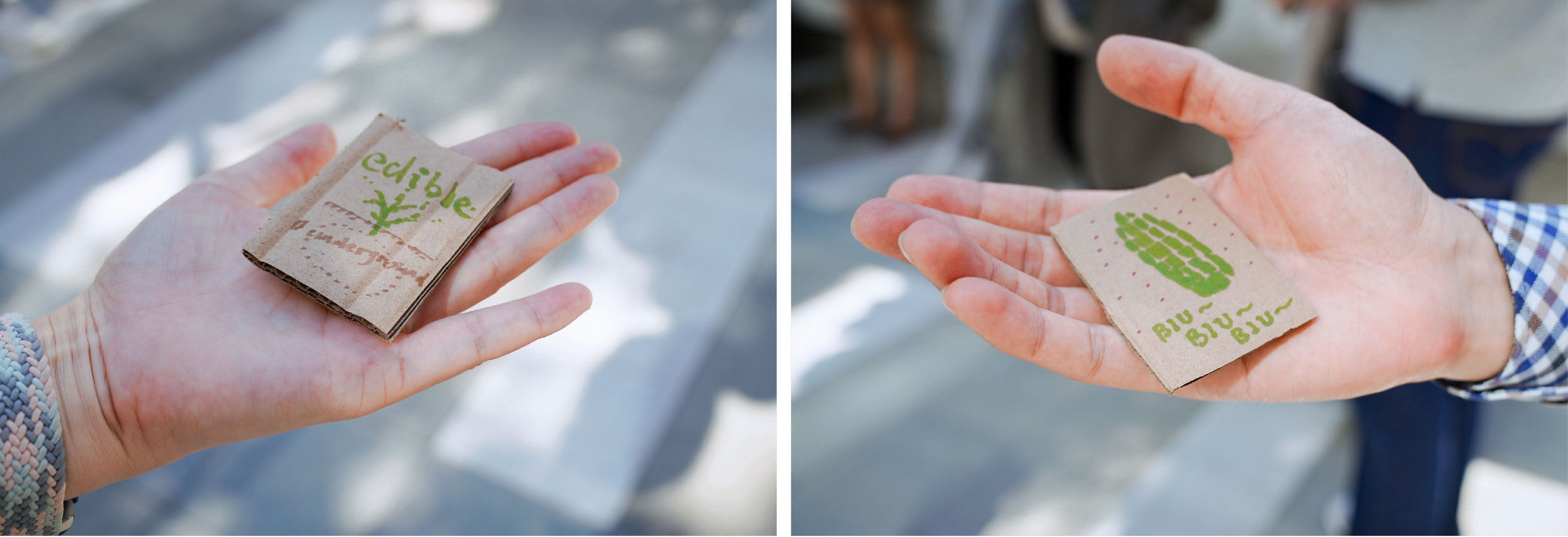
Drawings distributed during the nature walk show different aspects of plants on campus
Luck All Around: Trees Lining the Quad
The grassy lawn is a great place to relax with friends between classes, enjoy some sunshine, and maybe even find a lucky four leaf clover. Even more luck awaits if you turn your gaze upwards. Lining the edges of the grassy lawn are rows of zelkova serrata trees, which carry an auspicious meaning in Chinese culture. Nature guide Zhou Xinzhi says that the Mandarin character for the trees, 榉 jǔ, is a homonym for another character, 举 jǔ, which refers to success in imperial examinations of the Ming and Qing dynasties. Hansa Mirpuri ’24, who joined the nature walk, says learning about the zelkova serrata trees has made her walks on campus more enjoyable. “The trees symbolize good grades and prosperity,” she says. “It puts the trees in context of the campus environment and makes me appreciate them in a different way,” she says. If you’re feeling superstitious, hanging out by these trees before your next test couldn’t hurt.
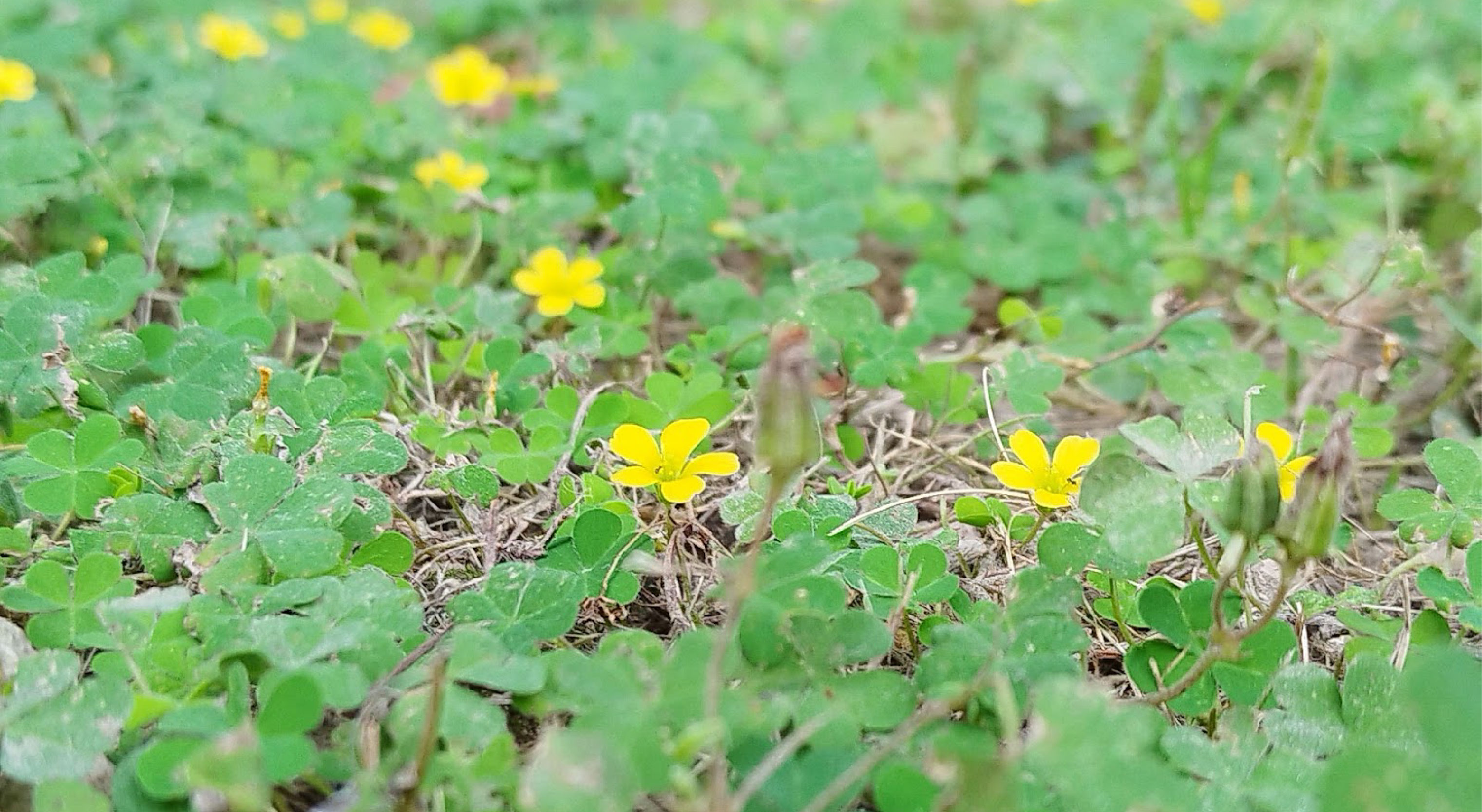
Weed or Cure?: Creeping Wood Sorrel
Now let your gaze fall downward again. Hidden among the grass just inside the West gate, you may find creeping wood sorrel, a small plant with tiny yellow flowers and leaves that resemble clover. While some gardeners may think of the plant as a weed, it has a wide range of uses. Creeping wood sorrel has a tart flavor and because it is high in vitamin C, it is often used in medicinal teas to clear away heat and dampness, detoxify, and reduce swelling. It can be used to treat digestive ailments like scurvy and other health issues. Look for creeping wood sorrel on sunny days, as its leaves and flowers tend to close up when it gets dark out.

Nature guide Zhou Xinzhi showing off a leaf from a Chinese hackberry tree
Bird and Butterfly Magnet: Chinese Hackberry Trees
Chinese hackberry trees, or celtis sinensis, are large deciduous trees native to parts of China, Korea, and Japan, and are a member of the hemp family. The tree flowers in spring and fruits develop in fall. It is highly adaptive to its environment, and birds and fruit bats transport its seeds from place to place. Observe the leaf of the hackberry tree- it is often asymmetrical with jagged edges. Hestina assimilis, or the red ring skirt butterfly, munch on hackberry leaves in their larval stage. Birds are attracted to the hackberry fruit. The roots, bark, and fruits of the hackberry tree are also used as ingredients in traditional Chinese and Korean medicine.

The Fruit of Nature’s Labor: Fruit Trees
Look closely and your efforts may bear fruit! No really, there are actually several fruit trees on campus. Wander towards the northeast corner of the quad and you’ll come across two waxberry trees. Known locally as yangmei, waxberries go by a myriad of other names, including Chinese bayberries and even yumberries. In June and July, the trees bear tart fruit that are enjoyed by humans and non-humans alike.

Closer to the East gate is a pomelo tree, which has already bore fruit. Sadly, this pomelo is not the tasty kind, so if you’re feeling hungry for one, you’d better head to a local fruit shop instead. Although we humans may not be able to enjoy the campus pomelo, swallowtail butterflies do, as various citrus trees often function as hosts for this species.

A Leaf By Any Other Name: Acer Palmatum
Several Japanese maple trees also live on campus, but in China they have a different name: wait for it… ‘chicken claw maples,’ referring to the claw-like shape of their iconic leaves. Acer palmatum, as they are officially known, produce a dry fruit or seed pod called a samara, known by many as helicopters or whirlygigs for their propeller-like wings, which allow them to be carried by the wind to propagate. Aside from their evolutionary benefit, the winged seed pods are also whimsically beautiful as they spin in the air.

Raising the Roof: Rooftop Gardens
NYU Shanghai’s rooftop gardens overlook the city beyond campus. The 9th floor garden is landscaped with trees and flowers, while the 7th floor garden is envisioned as a garden lab of sorts. Currently used by Assistant Arts Professor of Interactive Media Arts Andy Garcia’s Urban Farming course, the garden has produced a bounty of fresh cucumbers, radishes, eggplant and greens throughout the fall semester. The space is currently home to a vast array of programming, including a weekly gardening session held on Tuesdays during the lunch hour.
Associate Professor of Contemporary Global Media Anna Greenspan, who attended the campus nature walk, said the 7th floor rooftop garden is her favorite nature spot on campus not just for the delicious vegetables, but because it holds so much potential. “There’s already a community centered around the rooftop garden that’s innovative, research-oriented, full of life and deeply nourishing,” she said. Professor Greenspan is one of a number of faculty working on expanding and developing the garden space. “If our dreams come true it will certainly become a highlight of the campus."
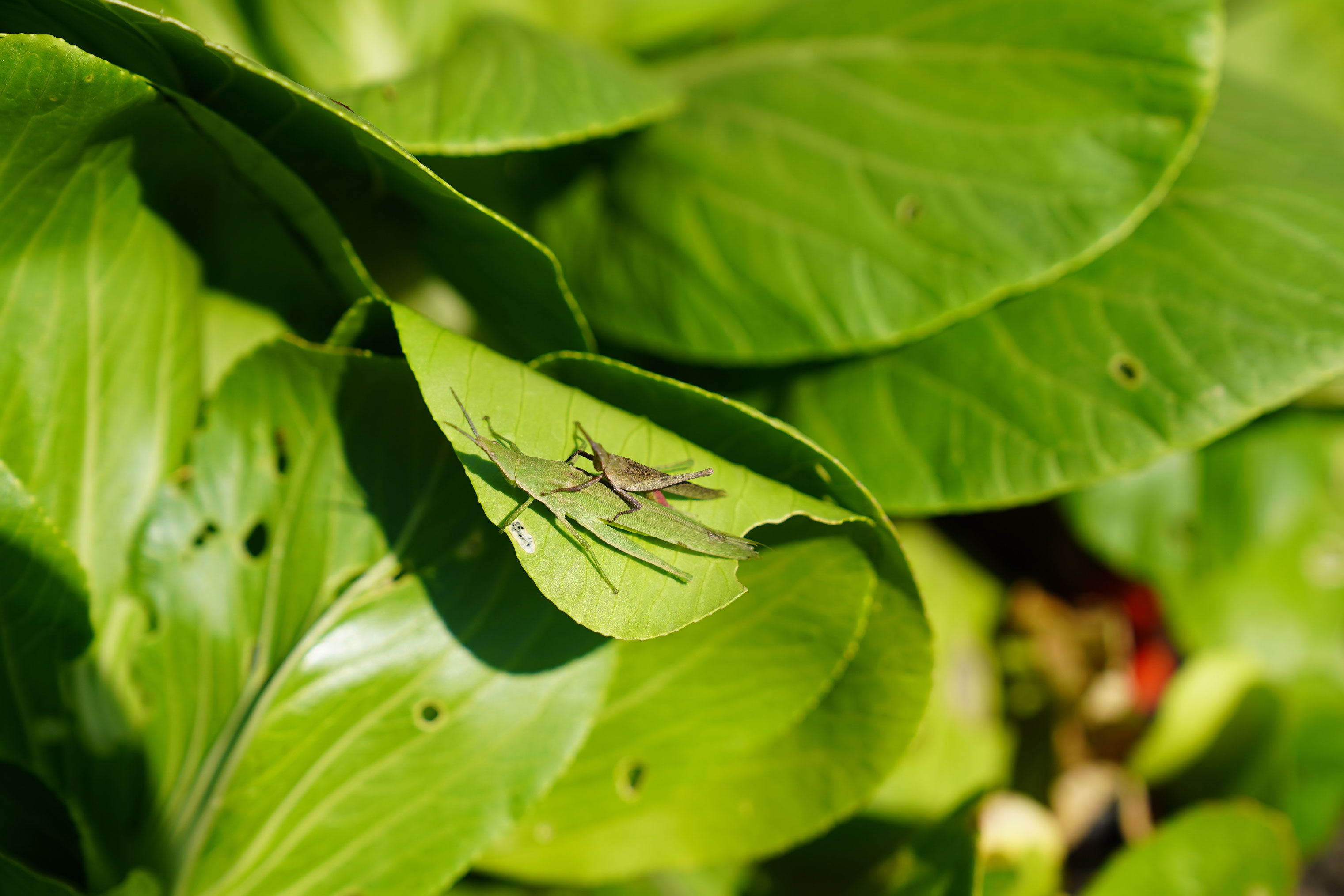
Little Friends: Creepy Crawlies and Furballs
The New Bund campus is also a hive of activity of tiny insects and arachnids. Tiny lovey-dovey grasshopper couples can be observed hiding among the leaves in the rooftop garden. The female grasshopper carries the male on her back while they mate. Butterflies, hoverflies, and bees flitter among the flowers and snails and spiders have made their homes among the plants.

We can’t leave out our lovely campus cat, who you’ve likely noticed in your wanderings about campus. The cat, who goes by several different names (Princess, Stella and Bartholomew, to name a few), can be spotted lounging around the quad and keeping students company between classes. Shreya Jaisingh ’26 says the cat was shy at first but now enjoys a busy social life on campus, with many admirers. Applications for the Cat Care Committee are now open.

Stop and Smell the Flowers: Campus Blooms
For anthophiles (or bloom lovers), there are also a number of flowering plants that can be spotted around campus. Bright pink camellia blooms brighten the path to the Welcome Center near the West gate and along the walkway between the West and South gates. But don’t waste your time to stop and smell the flowers, because camellias have no scent. Along the designated smoking area, yellow chrysanthemums bloom, providing food in the autumn and winter to pollinators. More chrysanthemums can be found in the rooftop garden on the 9th floor of the South Building.

Learn More:
Want to learn more about the flora and fauna found in and around the New Bund campus? Handy apps like iNaturalist and PlantNet can help you identify plants in English. Wechat offers a great scanning function too- scan any tree, plant, flower, bird, or bug and the Chinese name will pop up for you. The app boasts it can identify more than 20,000 plants and flowers.
Hansa Mirpuri ‘24 says focusing on the New Bund campus’ natural features is a great way to find balance. “Solely focusing on academics is tough,” she says. ”Nature acts as a reminder to step back, take a break, and look outside at how life around continues, and so will we.”


